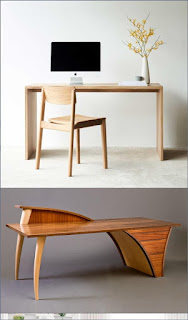American Furniture Plans: Crafting Classic and Timeless Designs
American furniture boasts a rich history, reflecting the nation's evolving tastes and craftsmanship. From the sturdy simplicity of Shaker pieces to the ornate elegance of Victorian styles, American furniture plans offer a gateway to recreating these iconic designs. Whether you're a seasoned woodworker or a curious beginner, these plans provide a blueprint for bringing timeless beauty into your home. This journey into American furniture making is not just about constructing pieces; it's about connecting with a legacy of skill and artistry.
Exploring the Variety of American Furniture Styles
The landscape of American furniture styles is diverse and captivating. Each style tells a story, reflecting the social, economic, and technological influences of its time. Understanding these nuances is key to appreciating and accurately reproducing these designs. Consider the clean lines and functional simplicity of Shaker furniture, the graceful curves and ornate details of Queen Anne, or the grandeur and imposing presence of Victorian pieces. Each style presents unique challenges and rewards for the furniture maker. The plans themselves adapt to suit the skill level of the builder, offering variations in complexity and detail.
Shaker Simplicity: Function Meets Form
Shaker furniture epitomizes minimalist elegance. Its designs prioritize functionality and durability, eschewing excessive ornamentation for clean lines and uncluttered forms. American furniture plans for Shaker pieces often highlight the use of joinery techniques – dovetails, mortise and tenon – showcasing the craftsmanship inherent in these designs. Recreating a Shaker chair or table involves understanding the principles of simplicity and the precise execution of essential joinery. The result is furniture that is both beautiful and enduring.
Queen Anne Grace: Curves and Elegance
In stark contrast to Shaker simplicity, Queen Anne furniture embraces curves and ornamentation. Cabriole legs, shell carvings, and intricate details characterize this style, showcasing a flair for refined aesthetics. American furniture plans for Queen Anne pieces demand a higher level of skill, particularly in shaping and carving the curved elements. Understanding the historical context and the subtle nuances of the design is vital to capturing the true essence of this graceful style. The payoff, however, is a stunning piece of furniture that speaks to a bygone era of elegance.
Victorian Grandeur: Opulence and Detail
Victorian furniture exudes opulence and grandeur. Intricate carvings, rich materials, and a dramatic scale define this style, reflecting the prosperity and confident aesthetic of the Victorian era. American furniture plans for Victorian pieces often involve complex joinery and detailed ornamentation. This style requires significant woodworking skill and meticulous attention to detail. The final product, however, is a statement piece that commands attention and speaks to a passion for craftsmanship and historical accuracy.
Finding and Utilizing American Furniture Plans
Numerous resources exist for finding detailed and accurate American furniture plans. Online retailers, woodworking magazines, and specialized books offer a wealth of options, catering to various skill levels and design preferences. When choosing plans, carefully consider the level of detail provided, the clarity of the instructions, and the overall reputation of the source. Ensure the plans align with your woodworking skills and available tools. Investing time in selecting the right plans sets you up for success.
Essential Considerations Before You Begin
Before diving into the project, careful planning is essential. Assess your skill level honestly, gather the necessary tools and materials, and ensure you have a dedicated workspace. Take your time studying the plans thoroughly, understanding each step before starting construction. Don't rush the process; allow for ample time to complete each phase accurately. A methodical approach will result in a high-quality finished product.
Building American furniture from plans is a rewarding experience. It's a journey that combines historical appreciation, skilled craftsmanship, and the satisfaction of creating a lasting piece of art for your home. Embrace the challenge, celebrate the process, and enjoy the timeless beauty that results from your efforts.


















